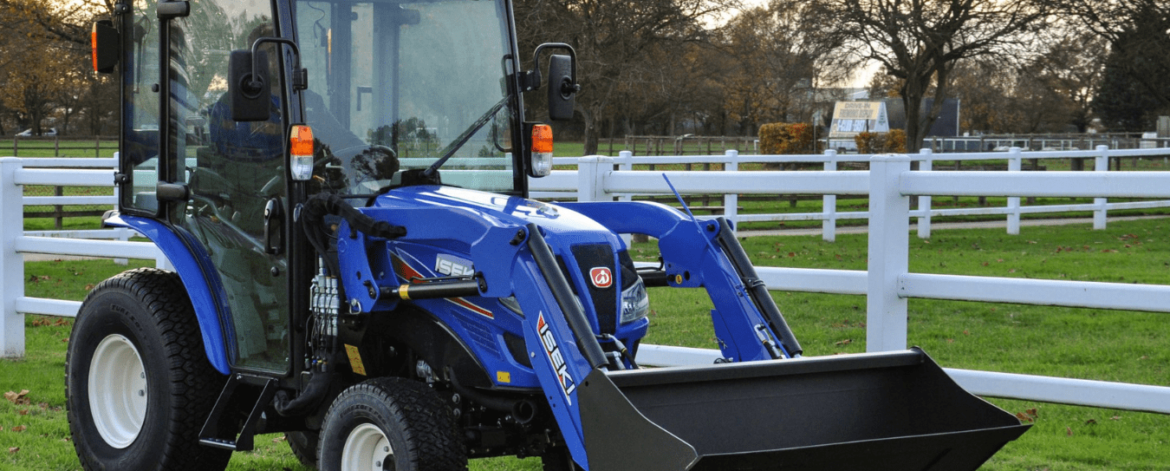Introduction to Compact Tractors
A small John Deere compact tractor with a front loader being used to gather debris on a small farm. Compact tractors are essentially scaled-down agricultural tractors that pack useful power and versatility into a smaller frame. They typically range from about 20 to 60 horsepower (HP), making them much less powerful than full-sized farm tractors but ideal for light- to medium-duty tasks. A standard full-size tractor usually starts at 60+ HP (often reaching several hundred HP) and is built for heavy-duty field work on large farms. In contrast, compact tractors weigh only around 4,000 pounds or less and come equipped with the same standard features as larger tractors – like a 540 RPM power take-off (PTO) and a three-point hitch for implements – but in a more maneuverable size. This smaller stature is a key difference: compact tractors can navigate tight spaces that would challenge bigger machines, all while handling many of the jobs required on a small farm.
For junior farmers or those starting out with a small acreage, compact tractors offer an accessible entry point into mechanized farming. They bridge the gap between riding mowers or sub-compact lawn tractors and the much larger agricultural tractors. In practical terms, a compact tractor provides a balance of power, size, and versatility suited to small-scale agriculture. It allows a farmer to perform a wide range of farm operations (from mowing and tilling to hauling and digging) without the cost or complexity of a full-size machine. In the next sections, we’ll explore the key features that define compact tractors, the tasks they excel at, how they compare to other tractor types, and why they can be a cost-effective, efficient choice for a new farmer.
Key Features of Compact Tractors
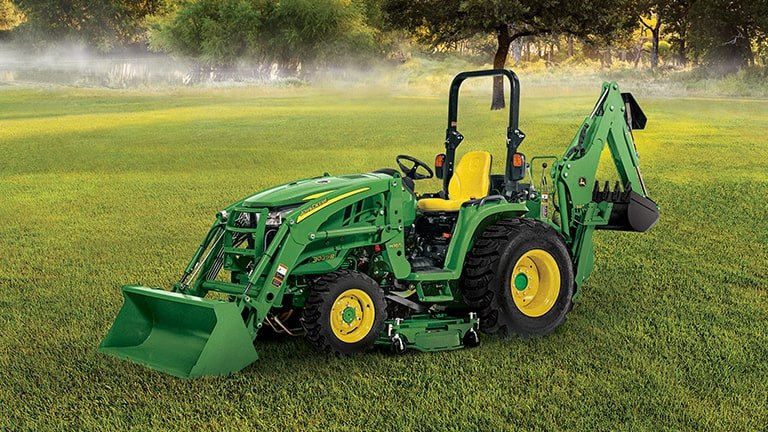
Compact tractors may be small, but they come packed with features that make them incredibly useful on a farm. Here are some of their key characteristics:
- Engine Power: Most compact tractors run on fuel-efficient diesel engines in the ~20–60 HP range. This horsepower is sufficient for tasks like mowing, tilling, and light hauling, while keeping fuel consumption low. Their lower horsepower engines mean they burn less fuel than big tractors, translating to long-term cost savings on a small farm.
- Size and Maneuverability: As the name implies, compact tractors are smaller in size and weight (generally under 4,000 lbs). This compact frame allows tight turning radiuses and easy maneuvering around small barns, orchards, or garden plots. The smaller size lets them access narrow rows and confined areas that larger tractors can’t, navigating obstacles with ease. Many models also offer four-wheel drive (4WD) for better traction on uneven terrain.
- Attachments and Implements: A hallmark of compact tractors is their ability to work with a wide variety of implements. They come standard with a Category 1 three-point hitch and a 540 RPM rear PTO, which are compatible with numerous farm attachments. This means a compact tractor can use mowers, loaders, backhoes, tillers, blades, post-hole augers, plows, and more. In fact, there are “a zillion different implements” available — from rotary cutters and landscape rakes to box scrapers and snow blowers — that can be quickly attached to a compact tractor. Many compact tractors also support front-mounted implements (like a front-end loader) and mid-mount mower decks, adding to their versatility.
- Versatility: Thanks to the range of attachments they can handle, compact tractors are true multi-taskers. One machine can mow fields, dig trenches, haul materials, till gardens, move snow, and even bale small hay bales with the proper equipment. Swapping between implements is relatively quick, allowing a farmer to switch from one job to another in the same day. This versatility means you don’t need separate specialized machines for each task – the compact tractor can do it all, making it a cost-effective workhorse for a small farm.
- Ease of Operation: Compact tractors are generally designed with the novice in mind, featuring user-friendly controls and driving features. Many models offer hydrostatic transmissions (HST) with simple pedal controls (much like driving an automatic car), power steering, and ergonomic operator stations. These features make them easy to drive even for beginners, so junior farmers can get up to speed quickly without extensive training. The control layout is usually intuitive, and safety features like rollover protection structures (ROPS) are standard to protect the operator.
- Maneuverability and Footprint: With their shorter wheelbase and lower overall height than standard tractors, compact tractors can be operated in areas with height or width restrictions (for example, inside small barns or between orchard trees). Their lighter weight also means they tend to cause less soil compaction, which is gentler on your fields and yard. This smaller footprint is ideal for preserving soil structure on a market garden or a small pasture.
In summary, compact tractors combine sufficient power, agility, and compatibility with farm implements to perform a wide range of jobs. These features make them particularly well-suited for small-scale farming and property maintenance, where flexibility and ease of use are paramount.
Primary Uses of Compact Tractors in Small-Scale Agriculture
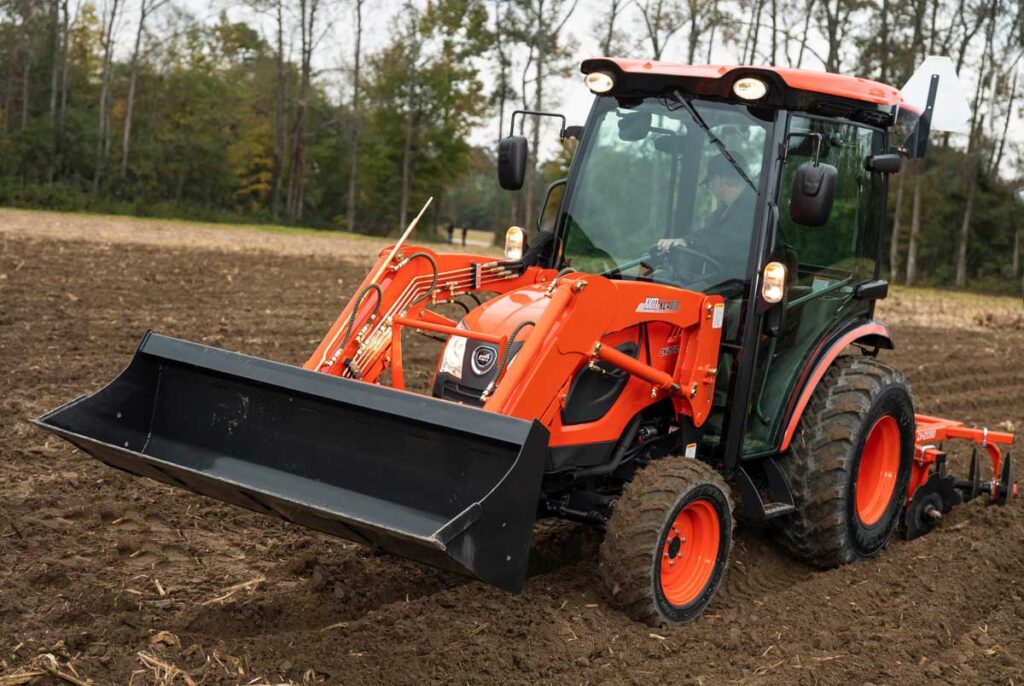
A compact New Holland tractor with a rear rotary mower attachment, used for pasture mowing and property maintenance. Despite their modest size, compact tractors are true workhorses on a small farm. Junior farmers will find that these machines can handle most day-to-day agricultural tasks. Some of the primary uses of compact tractors include:
- Soil Preparation: Compact tractors excel at preparing the soil for planting. By attaching a rotary tiller or small plow, you can break up ground for garden beds or small fields. These tractors have enough power to till large vegetable gardens or plow light-duty furrows in a plot, effectively replacing the need for labor-intensive hand tilling. With the right rotary tiller, a compact tractor can easily work a large garden, turning over soil to ready it for crops.
- Planting and Cultivation: For seeding and planting, a compact tractor can pull small seed drills, planters, or cultivators suited to small-scale farming. This makes tasks like laying rows of vegetables or planting cover crops much faster and more precise than doing it manually. The three-point hitch allows the use of cultivators and row crop equipment to weed between rows or hill up soil around plants. While compacts won’t pull a giant corn planter, they are perfect for market gardens, orchards, and vineyards, where they can cultivate between trees or vines without damaging them, thanks to their agility.
- Harvesting and Hauling: Although a compact tractor cannot run large combine harvesters, it plays an important role in harvesting on small farms. For example, you can attach a sickle bar mower or small hay mower to cut hay on a few acres, then use a mini baler or a compact square baler to make hay bales that the tractor can handle. In fact, compact tractors can “handle small hay operations”, allowing one to cut and bale hay in manageable sizes for a small herd. They are also extremely useful for hauling harvested produce or materials: you can tow a trailer or wagon loaded with crops, firewood, or supplies. With a front-end loader, a compact tractor can scoop up and transport bulk materials like soil, compost, or gravel, making harvest cleanup and barn chores much easier.
- Mowing and Property Maintenance: One of the most common uses of a compact tractor is mowing – whether it’s clipping pastures, cutting hay, or grooming large lawns. By attaching a finish mower, brush hog (rotary cutter), or mid-mount mower deck, you can maintain grassy areas and keep weeds in check. These tractors are ideal for managing a few acres of pasture or a roadside, where a riding lawnmower would be too slow or ineffective. They also shine at general maintenance tasks: you can use a back blade or box scraper to grade driveways, use a post-hole digger on the 3-point hitch to set fence posts, or attach a sprayer to handle pasture weed control. In winter, compact tractors become snow removal machines by using a front snow blower or blade, easily clearing driveways and farm lanes. In fact, they can “blast through snow” and are often employed for light municipal snow removal or clearing barnyards.
- General Farm Upkeep: Day-to-day chores on a small farm are made easier with a compact tractor. Need to clean out animal pens or move manure? A compact tractor with a loader can scoop and transport it. Need to move feed, hay bales, or heavy supplies? Pallet fork attachments or a simple trailer hookup let you carry those loads with ease. From landscaping tasks like digging a garden pond with a backhoe attachment to transporting tools and materials around the farm, a compact tractor is the all-purpose vehicle. Farmers often say it’s like having an extra pair of strong hands – many tasks that would take hours by hand (or be impossible alone) become feasible with these tractors.
In short, compact tractors cover the spectrum of small-farm needs: plowing, tilling, planting, mowing, hauling, digging, and clearing. Their primary uses span soil preparation, crop management, harvesting support, and property maintenance, making them indispensable for efficient operation of a small or junior farmer’s enterprise.
Comparing Compact Tractors to Other Types of Tractors
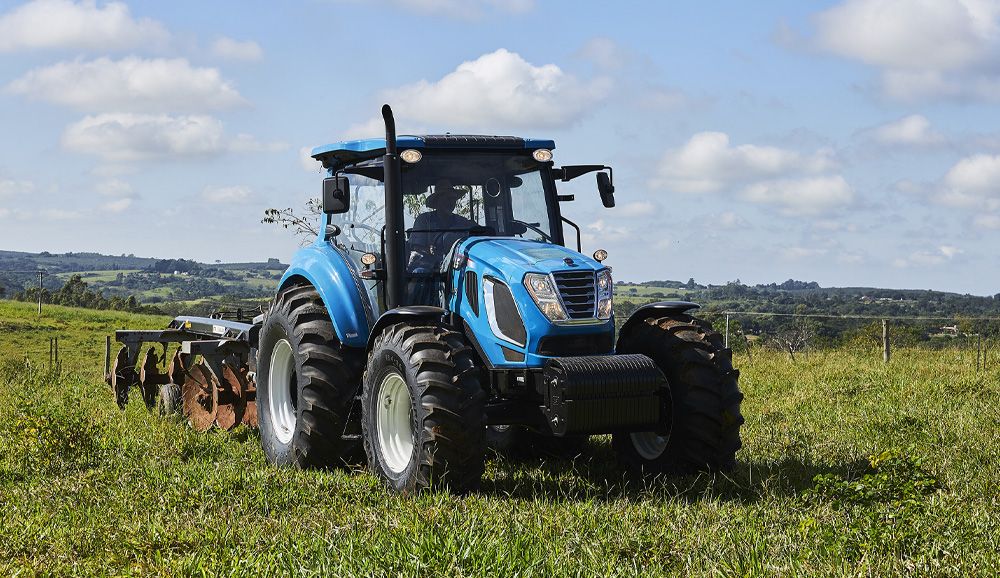
Not all tractors are created equal. As a junior farmer, it’s important to understand how compact tractors stack up against other tractor categories – namely sub-compact tractors, utility tractors, and full-sized standard tractors. Each type has its advantages and limitations for small-scale farming. Below is a comparison of these categories and what they mean for someone just starting out:
- Sub-Compact Tractors: These are the smallest farm-oriented tractors, often considered a step up from a garden lawn tractor. Sub-compacts usually have 15–25 HP engines (two- to three-cylinder diesel) and come with a three-point hitch and PTO like larger tractors. They can even double as heavy-duty riding mowers. The big advantage of sub-compact tractors is their small size and ease of use – they are extremely nimble and perfect for tight spaces or small properties. They excel at tasks like mowing lawns, light material handling, and small garden tilling. In fact, a good sub-compact tractor is one of the most popular choices for hobby farmers because it’s affordable and easy to operate. For a junior farmer with only a few acres, a sub-compact might handle basic chores such as cutting grass, moving mulch, or clearing snow. They also typically cost less than larger tractors, with new models sometimes starting under $10,000. However, the limitation is their lower power and lighter build – they generally have limited lifting capacity (around 500–800 lbs on the loader) and aren’t suitable for heavy-duty jobs. Rough terrain or large implements can be challenging for sub-compacts. In other words, they might struggle with deep plowing, large attachments, or handling big round bales. For a junior farmer, a sub-compact is a great entry-level machine but may be outgrown if the farm’s workload increases beyond light tasks.
- Compact Tractors: Compact tractors sit one notch above sub-compacts and are the primary focus of this guide. With about 25–60 HP (commonly 40–50 HP for many models) and a sturdier frame, they hit a sweet spot for small farms. Compared to sub-compacts, compacts offer greater lifting capacity (often over 1,000–2,000 lbs) and can handle larger implements like 5-6 foot wide tillers or bush hogs. They are still relatively small and agile, but powerful enough for intensive tasks such as plowing a few acres, baling small hay bales, or running a front-end loader full of gravel. For junior farmers, a compact tractor often represents the best balance: it’s big enough to do serious work but not as costly or cumbersome as a full-size machine. As mentioned earlier, compacts are defined as weighing under ~4,000 lbs with Category 1 hitch and PTO, and they can lift over 2,000 lbs with a loader in many cases. They share many attachments with sub-compacts (mowers, blades, etc.) but also can use heavier attachments that sub-compacts cannot. The main limitation of a compact tractor is that it still can’t match the raw power or speed of larger tractors for extensive operations. If you plan to expand into larger-scale farming (more acreage or very heavy implements), you might eventually need to upgrade. But for a small farm, the compact tractor’s versatility and moderate power is usually more than sufficient.
- Utility Tractors: Utility tractors are a step larger than compacts – think of them as medium-sized farm tractors. They typically range from 40 up to 100 HP (with some models even exceeding that). In fact, years ago the term “utility tractor” often overlapped with what we now call compact tractors, but modern utility tractors have grown in size and capability. A utility tractor usually has a heavier frame and often a Category 2 hitch (for larger implements), plus features like a four-cylinder diesel engine, more advanced transmissions (many speeds or power shifting), and sometimes even air-conditioned cabs and computer controls on newer models. The advantage of a utility tractor is power and capacity – they can pull larger plows, lift heavier loads, and handle big jobs on mid-sized farms. For instance, a 70 HP utility tractor can run a large round baler or a 7-8 foot mower and can easily lift over 2,000 lbs on the front loader. For a junior farmer, a utility tractor might be considered if the farm operations are growing: perhaps you have 50+ acres or plan to do custom work like baling hay for others. Utility tractors can tackle almost any task, from large-scale snow removal to big field preparations. The downside is that they are more expensive and less maneuverable in small areas. New utility tractors often cost significantly more than compact tractors (ranging roughly from the mid-$20,000s up to $70,000 or more, depending on horsepower and features). They also take up more space and may require larger implements, which are costlier. For many junior farmers, a utility tractor could be overkill – unless you truly need the extra power, a compact can usually get the job done with a bit more time. Utility tractors shine on larger farms or for heavy-duty usage, whereas on a small farm you might not fully utilize their capabilities.
- Full-Sized (Row-Crop or Standard) Tractors: These are the classic large farm tractors you see on big agricultural operations. Full-sized tractors usually start around 60–HP and go up into the hundreds of horsepower. They are built for continuous, heavy work like plowing dozens of acres, pulling large planters, harvesting with combine attachments, or heavy hauling. They feature robust frames, often dual tires or tracks for traction, and Category 2 or 3 hitches for very large implements. The advantage is obvious: massive power and efficiency on large tracts of land. A row-crop tractor can pull a multi-bottom plow or a giant seeder, and cover in one day what a compact tractor would take a week to do. However, for a junior farmer with a small farm, a full-size tractor is generally not practical. They are extremely expensive (often well over $100,000 for new models) and costly to operate, guzzling fuel. They are also physically too large for small fields or tight farmyards – trying to maneuver a big tractor in a 5-acre field would be inefficient and could damage the land (heavy tractors can compact soil more). Unless your farming operation expands dramatically or you get into large-scale row cropping, a full-size tractor would offer more drawbacks than benefits on a small farm. The only scenario a junior farmer might consider one is if there’s a plan to cultivate large acreage in the near future, or possibly if you found a used older model for dirt cheap and have space to use it. In most cases, though, full-sized tractors are tailored to commercial farming and are beyond the scope of what a beginning small farmer needs.
In summary, sub-compact and compact tractors are usually the best fit for small-scale farming. Sub-compacts are great for very small properties and super-light chores, while compact tractors handle a broader range of farm tasks and can grow with your needs. Utility tractors bring more muscle for bigger farms or heavy work but come with higher costs and larger size. Full-sized tractors are specialist machines for large farms and not necessary (nor cost-effective) for a junior farmer’s purposes. Understanding these differences can help you invest in the tractor type that matches your farm size and workload. As one guide put it, compact tractors tend to provide “exceptional value for small farming use”, whereas larger tractors only pay off if you truly require their capabilities.
Cost-Effectiveness and Efficiency of Compact Tractors
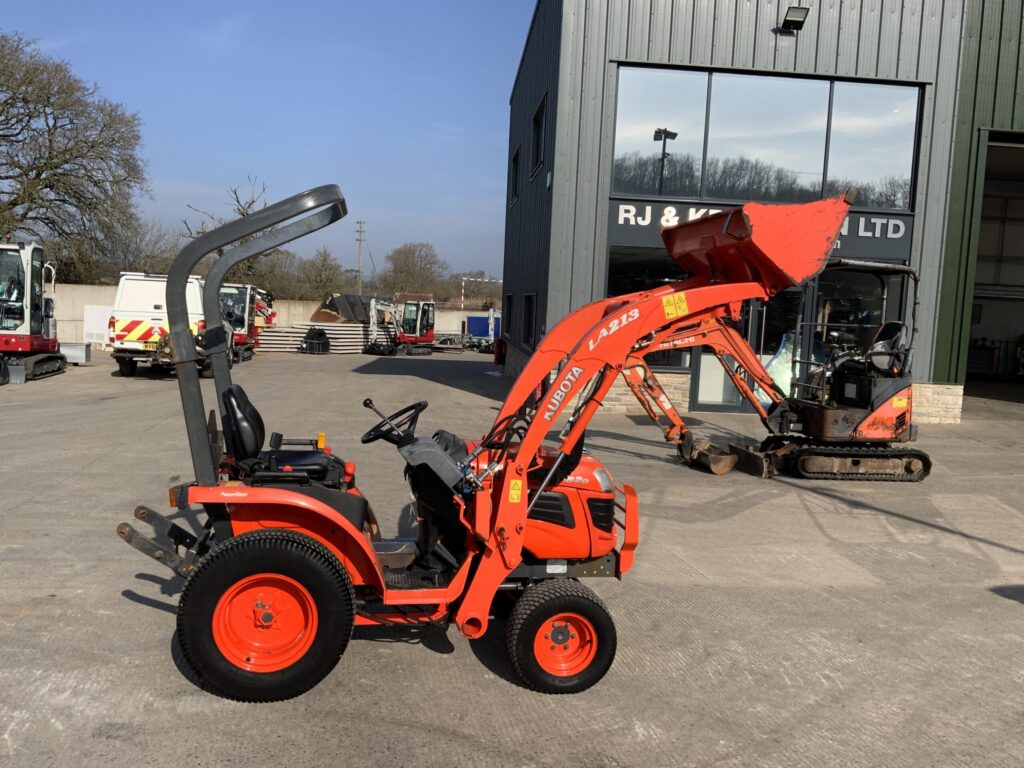
One of the biggest considerations for any new farmer is budget and the return on investment of equipment. Compact tractors generally shine in cost-effectiveness for small-scale farming. They strike a balance between capability and cost that makes sense for managing a few to a few dozen acres.
Purchase Cost: In terms of upfront price, compact tractors are significantly more affordable than full-sized farm tractors. While exact prices vary by brand and features, on average a new compact tractor can range from roughly $15,000 to $30,000 (USD) for the tractor itself. This is more expensive than a sub-compact (which might start around $10,000 or slightly above) but far less than large tractors that can easily run $75,000 or well over $100,000. For a junior farmer, that difference means a compact tractor is often within reach either through financing or by buying a good used unit, whereas a big tractor would be cost-prohibitive. Additionally, many manufacturers offer entry-level compact models with basic features to keep costs down for small farmers. Implements and attachments for compact tractors also tend to cost less than those for larger tractors (a 5-foot rotary mower, for example, is much cheaper than a 15-foot batwing mower for a big tractor). By investing in a versatile compact tractor, a small farmer can avoid the expense of buying multiple single-purpose machines.
Fuel and Operating Costs: Compact tractors are generally fuel-efficient. Their smaller diesel engines burn less fuel per hour than the high-horsepower engines in utility or full-size tractors. For instance, if a compact tractor uses maybe 1–2 gallons of diesel per hour under load, a big tractor might use 5+ gallons per hour doing heavy work. Over time, those fuel savings add up, making the compact cheaper to run for the types of tasks a small farm requires. Maintenance costs (oil changes, filters, etc.) are also lower on compact tractors because they have simpler systems and use smaller quantities of fluids. As one source notes, their small size often means less maintenance and upkeep compared to larger tractors. Parts like tires and batteries are smaller and cheaper as well. Insurance and storage costs may be lower too – a compact tractor can often be kept in a standard garage or shed, whereas a big tractor might need special storage. All of these factors contribute to the compact tractor being a cost-effective choice over the long term.
Efficiency and Productivity: Beyond dollars, there’s the question of how efficiently a compact tractor lets you work. For many tasks on a small farm, a compact tractor dramatically increases productivity compared to manual labor or using smaller equipment. With the right attachments, one person on a compact tractor can accomplish in an afternoon what might take days by hand. For example, plowing or tilling a one-acre field by hand is backbreaking and slow, but a 30-40 HP compact tractor with a tiller can do it in a fraction of the time. Mowing a pasture with a walk-behind mower could take hours, while the tractor can cut it in an hour. This efficiency gain means a junior farmer can manage more tasks or a bit more acreage without hiring extra help. As a result, labor costs or time demands are reduced. One farm equipment dealer noted that owning a compact tractor “means you can accomplish more in less time…with implements like tillers and loaders, you can easily tackle a variety of tasks… and not get bogged down in manual labor.”. In other words, the machine pays for itself by allowing you to be a more efficient operator of your farm.
Versatility = Value: Another aspect of cost-effectiveness is the multi-purpose value of compact tractors. Instead of buying separate machines (a ride-on mower, a small skid-steer, an ATV with trailer, etc.), a single compact tractor can fill all those roles with different attachments. This consolidation is budget-friendly. The tractor might sit idle some days, but overall it’s utilized year-round for many jobs, giving you more bang for your buck. Many junior farmers start with a compact tractor precisely because it’s a one-time investment that unlocks countless capabilities on the farm. Additionally, compact tractors tend to hold their resale value well in the used market because there is high demand from other small farmers, landscapers, and large property owners. Should you ever need to sell or upgrade, you can often recoup a good portion of your investment.
In summary, compact tractors offer efficient operation at a lower cost scale that aligns with small farm budgets. They are cheaper to buy, cheaper to run, and able to boost productivity, making them a smart financial choice for many junior farmers. By saving time and labor, and by avoiding overspending on an oversized machine, a compact tractor can improve the bottom line of a small farming venture.
Practical Considerations for Junior Farmers
For those new to farming or transitioning from hobby gardening to using machinery, there are some practical factors to keep in mind when choosing and operating a compact tractor. These considerations will help ensure that the tractor you select truly meets your needs and that you can use it effectively:
- Ease of Use: Compact tractors are known for being user-friendly and easy to operate, which is a big plus for junior farmers who may not have prior experience with heavy machinery. Modern compact tractors often feature simple, intuitive controls – for example, many have hydrostatic (automatic) transmissions with just two foot pedals (forward and reverse) and a hand throttle, which simplifies driving. This means you can get started with minimal training or stress. Look for models with good ergonomics: an adjustable seat, clear visibility, and power steering can reduce operator fatigue. Controls for the hitch and PTO should be straightforward. Before buying, it’s wise to sit on the tractor and ensure you feel comfortable with the layout. Most dealerships will offer a demo or even basic training. The easier the tractor is to use, the more confident you’ll be tackling various jobs around the farm. Plus, simple operation is safer – you can keep your attention on the task rather than fighting with complicated gear shifts.
- Adaptability and Attachments: For a junior farmer, adaptability is key – you want equipment that can grow and change with your farm’s needs. Compact tractors rate highly in this area because of their quick attachment capabilities and diverse implements. When evaluating tractors, consider how easily you can swap attachments. Many compacts come with quick-attach systems (for example, a quick attach loader bucket or a quick-hitch adapter for rear implements) that make it faster to change tools. This is important because an easy-to-change implement means you’ll actually use the tractor for all those different tasks. Think about the specific jobs you need to do: Will you be mowing a lot? Then a mid-mount mower or rear mower is necessary. Planning to dig fence posts? Make sure a post-hole auger can fit the three-point hitch. Need to move pallets or feed bales? Consider a model that can take pallet forks on the loader. Compact tractors are often described as “versatile, handling a variety of tasks throughout the year”, so make a list of tasks and ensure the tractor has compatible attachments for each. This adaptability also includes terrain and space: if your farm has tight corners or low tree branches, maybe a smaller compact or one with foldable ROPS is needed. The goal is to have a tractor that can easily adapt from one chore to the next, so you’re getting maximum utility every season.
- Operational Efficiency: As a new farmer, you’ll be juggling many responsibilities, so efficiency in tractor operation is golden. A compact tractor can significantly streamline your workflow if used smartly. One practical tip is to plan your tasks in batches to minimize attachment changes – for instance, do all your mowing in one go, then switch to the loader for material handling, rather than swapping back and forth repeatedly. Also, take advantage of the tractor’s capabilities: use that loader instead of a wheelbarrow whenever possible, or till up that larger garden plot instead of hand-digging. Over time, you’ll learn the optimal speeds and engine RPMs for different tasks to save fuel and wear. Maintenance is another operational consideration: compact tractors are durable, but regular maintenance (like oil changes, filter cleaning, and greasing) will keep it running efficiently for years. Fortunately, basic maintenance on a compact tractor is something many farmers can do themselves, and the owner’s manual provides schedules and instructions. Efficiency also comes from matching the tractor to the job – don’t try to overwork a compact tractor beyond its capacity, as that can lead to breakdowns. For example, if you have to move a huge pile of material, it’s better to take multiple small loads rather than stress the hydraulics with one giant scoop. Used wisely, a compact tractor lets a junior farmer accomplish a lot with minimal time and effort. Many owners are pleasantly surprised by how much work they can get done single-handedly with a compact tractor that would have required hiring help otherwise.
- Safety and Training: Finally, a practical word on safety. Tractors are incredibly useful, but they are powerful machines and safety should always be a consideration, especially for newcomers. Compact tractors come with important safety features – ROPS (rollover protective structure) and seat belts are standard and should always be used. Make sure you understand the tractor’s stability; even a small tractor can tip if used improperly on a slope or if carrying a load too high. Go slowly on unfamiliar terrain and keep loads low to the ground when transporting. Many junior farmers benefit from reading the manual thoroughly and possibly watching training videos or taking a safety course. Develop good habits like shutting off the PTO before dismounting and using wheel chocks if necessary. Remember that a compact tractor, while smaller than a full farm tractor, can still cause injuries if not respected. The good news is that by following guidelines and using the safety features, you can greatly reduce the risk of accidents, allowing you to work confidently. As noted by equipment experts, the attachments can help you do tasks more safely (by mechanizing heavy labor), and modern compact tractors often include features like automatic engine shut-off if you leave the seat, which improve overall safety.
By keeping these practical considerations in mind – ease of use, adaptability, operational efficiency, and safety – junior farmers can ensure they get the most out of their compact tractor. The learning curve is short, and with some experience, your compact tractor will become an indispensable partner in your farming journey. It’s a tool that, when chosen and used well, truly empowers a small-scale farmer to achieve more with less strain. With the right compact tractor, even a beginner can confidently take on soil prep, planting, harvesting support, and property maintenance, setting the stage for a productive and enjoyable farming experience.


